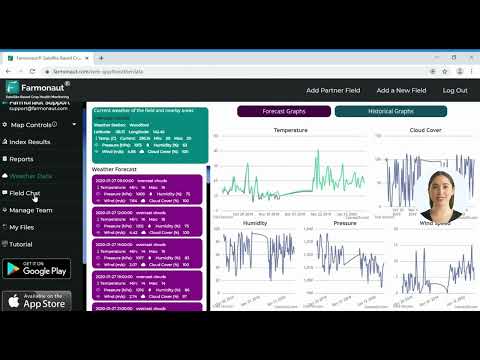Unlocking Healthcare Investment Potential: Expert Analysis of Behavioral Treatment Stock Performance
“Institutional investors hold a significant portion of behavioral healthcare stocks, often exceeding 80% ownership.”
In the ever-evolving landscape of investment opportunities, healthcare stocks have emerged as a beacon of potential, particularly within the behavioral healthcare sector. As we delve into this comprehensive analysis, we aim to provide valuable insights for investors seeking to capitalize on the dynamic healthcare market. Our focus will be on recent investment trends, institutional investor holdings, and analyst ratings for a major player in the behavioral healthcare industry.

The Rise of Behavioral Healthcare Investments
In recent quarters, we’ve witnessed a significant surge in interest towards behavioral healthcare stocks. This trend is not merely coincidental but reflective of broader societal shifts and growing awareness of mental health issues. The behavioral treatment facilities and mental health services sector has shown remarkable resilience and growth potential, even in the face of economic uncertainties.
As we analyze the market, it’s crucial to understand that investing in healthcare stocks, particularly those focused on behavioral treatment, requires a nuanced approach. The sector’s performance is influenced by various factors, including regulatory changes, technological advancements, and shifting demographics.
Institutional Investor Movements: A Sign of Confidence
One of the most telling indicators of a stock’s potential is the behavior of institutional investors. In the case of Acadia Healthcare Company, Inc. (NASDAQ: ACHC), we’ve observed significant movements that warrant attention:
- Vaughan Nelson Investment Management L.P. increased its holdings by a staggering 38.4% during the fourth quarter, acquiring an additional 295,515 shares. This move brought their total ownership to 1,064,455 shares, valued at approximately $42,206,000.
- GAMMA Investing LLC bolstered its stake by 57.1%, while Blue Trust Inc. increased its holdings by 69.4%.
- Nisa Investment Advisors LLC ramped up its position by 40.7%.
- Covestor Ltd made a dramatic move, escalating its stake by an impressive 834.4%.
- Fifth Third Bancorp followed suit with a 56.0% increase in its investment.
These substantial increases in institutional holdings are often seen as a vote of confidence in a company’s future prospects. Institutional investors typically have access to extensive research and analysis, making their moves particularly noteworthy for individual investors considering entering or expanding their positions in the healthcare sector.
Analyst Ratings: A Mixed but Promising Picture
When it comes to analyst ratings, Acadia Healthcare presents a somewhat mixed but overall positive outlook:
- TD Cowen lowered its target price from $70.00 to $66.00 but maintained a “buy” rating.
- Deutsche Bank Aktiengesellschaft upgraded its rating from “hold” to “buy,” significantly raising its target price from $45.00 to $75.00.
- StockNews.com downgraded Acadia from “hold” to “sell.”
Despite these varied opinions, the overall consensus remains positive. Out of ten analysts covering the stock, seven have issued buy ratings, two maintain hold ratings, and only one suggests selling. The average rating stands at “Moderate Buy” with a consensus price target of $70.22.
Financial Metrics and Stock Performance Indicators
To gain a deeper understanding of Acadia Healthcare’s position in the market, let’s examine some key financial metrics and stock performance indicators:
- Market Capitalization: $3.90 billion
- Price-to-Earnings (P/E) Ratio: 13.76
- Price-to-Earnings-Growth (PEG) Ratio: 1.75
- Beta: 1.30
- 52-Week Range: $36.50 – $87.77
- Debt-to-Equity Ratio: 0.60
- Current and Quick Ratios: Both at 1.07
These metrics provide valuable insights into the company’s financial health and market perception. The P/E ratio of 13.76 suggests that investors are willing to pay $13.76 for every dollar of earnings, which is relatively moderate for the healthcare sector. The beta of 1.30 indicates that the stock is more volatile than the overall market, which could present opportunities for investors comfortable with higher risk.
Moving Averages: Technical Analysis Insights
Moving averages are crucial technical indicators that help investors identify trends and potential entry or exit points. For Acadia Healthcare:
- 50-Day Moving Average: $42.10
- 200-Day Moving Average: $54.83
The current stock price hovering around the 50-day moving average suggests a potential consolidation phase. However, the significant gap between the 50-day and 200-day moving averages indicates a bearish trend in the medium term. Investors should monitor these levels closely for potential breakouts or reversals.

Behavioral Healthcare Market Trends
The behavioral healthcare market is experiencing significant growth, driven by several factors:
- Increased Awareness: Growing societal recognition of mental health issues is driving demand for behavioral treatment facilities and services.
- Government Initiatives: Expanded insurance coverage and government support for mental health services are boosting the sector.
- Technological Advancements: Telemedicine and digital health platforms are making behavioral healthcare more accessible.
- Aging Population: An increasing elderly demographic is driving demand for specialized mental health services.
These trends suggest a positive outlook for companies like Acadia Healthcare, which are well-positioned to capitalize on the growing demand for behavioral treatment services.
“Analyst price targets for major behavioral health companies can vary by up to 50% between bullish and bearish estimates.”
Comparative Analysis of Behavioral Healthcare Stocks
To provide a broader perspective on the behavioral healthcare sector, let’s examine how Acadia Healthcare compares to its peers:
| Company Name | Stock Symbol | Current Stock Price | 52-Week Price Range | P/E Ratio | Market Cap | Dividend Yield | Analyst Consensus |
|---|---|---|---|---|---|---|---|
| Acadia Healthcare | ACHC | $41.96 | $36.50 – $87.77 | 13.76 | $3.90B | N/A | Moderate Buy |
| Universal Health Services | UHS | $162.50 | $113.69 – $176.99 | 17.24 | $11.12B | 0.49% | Hold |
| HCA Healthcare | HCA | $304.75 | $215.96 – $318.86 | 15.98 | $80.64B | 0.86% | Buy |
| Tenet Healthcare | THC | $86.42 | $49.76 – $91.85 | 15.11 | $8.74B | N/A | Buy |
| Community Health Systems | CYH | $3.15 | $2.01 – $8.01 | N/A | $432.51M | N/A | Hold |
| Industry Average | – | – | – | 15.52 | – | 0.27% | – |
This comparative analysis reveals that Acadia Healthcare’s P/E ratio is slightly below the industry average, potentially indicating that it may be undervalued compared to its peers. However, it’s important to note that factors such as growth prospects, debt levels, and operational efficiency also play crucial roles in determining a stock’s true value.
Investing in Mental Health Services: A Growing Opportunity
The mental health services sector presents a compelling investment opportunity, driven by several factors:
- Rising Prevalence: Mental health disorders are becoming increasingly recognized and diagnosed, leading to higher demand for treatment services.
- Destigmatization: Societal attitudes towards mental health are improving, encouraging more individuals to seek treatment.
- Policy Support: Government initiatives and improved insurance coverage are making mental health services more accessible.
- Technological Integration: The adoption of telemedicine and digital health solutions is expanding the reach of mental health services.
Investors looking to capitalize on these trends should consider companies that are at the forefront of innovation in mental health treatment and have a strong foothold in the market.
Healthcare Sector Growth Potential
The healthcare sector, particularly behavioral healthcare, is poised for significant growth in the coming years. Factors contributing to this growth include:
- Aging Population: As the global population ages, the demand for healthcare services, including mental health support, is expected to increase.
- Chronic Disease Management: The rise in chronic diseases often has mental health implications, creating additional demand for behavioral healthcare services.
- Technological Advancements: Innovations in treatment methods and delivery systems are expanding the scope and effectiveness of healthcare services.
- Global Health Crises: Events like the COVID-19 pandemic have highlighted the importance of robust healthcare systems, including mental health support.
These factors suggest that the healthcare sector, and companies within it, may offer attractive long-term investment opportunities.
Stock Price Target Analysis
When considering investment in healthcare stocks like Acadia Healthcare, it’s crucial to examine analyst price targets and the rationale behind them:
- Bullish Targets: The highest price target for Acadia Healthcare stands at $75.00, representing a potential upside of over 78% from current levels. This optimistic view is based on the company’s strong market position and growth prospects in the behavioral healthcare sector.
- Conservative Estimates: The lower end of price targets hovers around $45.00, still suggesting a modest upside from current trading levels. These more conservative estimates factor in potential market volatility and competitive pressures.
- Consensus Target: The average price target of $70.22 indicates that most analysts see significant growth potential for the stock over the next 12 months.
It’s important to note that price targets are subject to change based on company performance, market conditions, and new information. Investors should use these targets as one of many tools in their decision-making process.
Healthcare Company Valuations: Beyond the Numbers
While financial metrics are crucial, valuing healthcare companies requires a holistic approach:
- Regulatory Environment: Changes in healthcare policies can significantly impact company valuations. Investors should stay informed about potential regulatory shifts.
- Innovation Pipeline: Companies with strong research and development capabilities may command higher valuations due to future growth potential.
- Market Share: A company’s position within the competitive landscape can influence its valuation. Market leaders often trade at a premium.
- Quality of Care: Healthcare companies that consistently deliver high-quality patient outcomes may see this reflected in their stock performance over time.
By considering these factors alongside traditional financial metrics, investors can gain a more comprehensive understanding of a healthcare stock’s true value.
Recent Upgrades and Downgrades: Decoding Wall Street’s Opinion
The recent analyst actions on Acadia Healthcare provide valuable insights:
- Deutsche Bank Upgrade: The upgrade from “hold” to “buy” with a significant price target increase suggests strong confidence in the company’s future prospects. This could be based on factors such as improving operational efficiency or expected market share gains.
- TD Cowen’s Adjustment: While lowering the price target, TD Cowen maintained a “buy” rating. This could indicate a more conservative outlook on near-term growth while still seeing long-term potential.
- StockNews.com Downgrade: The shift to a “sell” rating might reflect concerns about short-term headwinds or valuation concerns after recent stock price movements.
These diverse opinions highlight the importance of conducting thorough research and considering multiple perspectives when making investment decisions in the healthcare sector.
Investment Strategies for Healthcare Stocks
When investing in healthcare stocks, particularly in the behavioral treatment sector, consider the following strategies:
- Diversification: Spread investments across various healthcare subsectors to mitigate risk.
- Long-term Perspective: Healthcare trends often play out over extended periods. A buy-and-hold strategy may be appropriate for quality companies.
- Monitor Policy Changes: Stay informed about healthcare legislation and policy shifts that could impact the sector.
- Fundamental Analysis: Focus on companies with strong financials, proven management teams, and competitive advantages in their niche.
- Consider ETFs: For broader exposure to the healthcare sector, healthcare-focused ETFs can offer a diversified investment option.
Remember, while the healthcare sector offers significant potential, it also comes with unique risks and complexities. Thorough research and potentially consulting with a financial advisor are recommended before making investment decisions.
Conclusion: Navigating the Healthcare Investment Landscape
As we’ve explored throughout this analysis, the behavioral healthcare sector presents compelling investment opportunities, with companies like Acadia Healthcare at the forefront. The significant institutional investor interest, coupled with generally positive analyst sentiment, suggests a favorable outlook for the sector.
However, it’s crucial for investors to approach healthcare stocks with a balanced perspective. While the potential for growth is substantial, factors such as regulatory changes, technological disruptions, and market volatility can impact stock performance.
By staying informed about market trends, closely monitoring company financials, and maintaining a diversified portfolio, investors can position themselves to capitalize on the long-term growth potential of the healthcare sector while managing associated risks.
As always, we recommend conducting thorough research and considering your individual financial goals and risk tolerance before making any investment decisions. The healthcare sector’s evolution continues to present exciting opportunities for those willing to navigate its complexities.
FAQ Section
- Q: What makes behavioral healthcare stocks attractive to investors?
A: Behavioral healthcare stocks are attractive due to increasing awareness of mental health issues, expanding insurance coverage, and growing demand for mental health services across all age groups. - Q: How do regulatory changes affect healthcare stock performance?
A: Regulatory changes can significantly impact healthcare stocks by altering reimbursement rates, changing treatment protocols, or affecting insurance coverage. Positive regulatory changes can boost stock performance, while negative changes can lead to declines. - Q: What should investors look for when evaluating behavioral healthcare companies?
A: Key factors to consider include the company’s market share, quality of care metrics, financial health, growth prospects, and ability to adapt to technological and regulatory changes. - Q: How does the aging population trend affect behavioral healthcare stocks?
A: The aging population is likely to increase demand for behavioral healthcare services, potentially benefiting companies in this sector as older adults often require more mental health support. - Q: Are there any specific risks associated with investing in behavioral healthcare stocks?
A: Risks include regulatory changes, reimbursement rate fluctuations, competition from new treatment modalities, and potential stigma associated with mental health issues that could affect patient volumes.
Earn With Farmonaut: Affiliate Program
Earn 20% recurring commission with Farmonaut’s affiliate program by sharing your promo code and helping farmers save 10%. Onboard 10 Elite farmers monthly to earn a minimum of $148,000 annually—start now and grow your income!
For investors looking to diversify their portfolio with innovative agricultural technology, consider exploring Farmonaut’s offerings:
For developers interested in integrating agricultural data into their applications, check out Farmonaut’s API and API Developer Docs.







